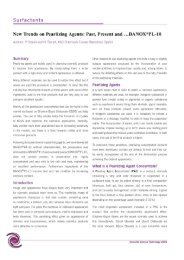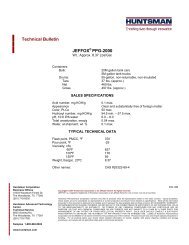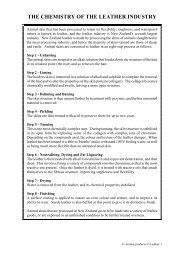BASF defoaming explanaiton
You also want an ePaper? Increase the reach of your titles
YUMPU automatically turns print PDFs into web optimized ePapers that Google loves.
Chemistry behind<br />
The Efka ® range of slip and leveling agents are based on<br />
the following chemical families:<br />
• Long chain polysiloxanes are the most common leveling<br />
agents in the coating industry. Pure polydimethyl<br />
siloxanes are not used in the Efka ® range due to their<br />
incompatibility with many resins. To improve this, the<br />
polydimethyl siloxane backbone is modified with alkyl or<br />
polyether side chains. In addition, reactive groups such<br />
as isocyanates, double bonds, hydroxyl groups and acid<br />
groups can be incorporated, leading to the advantage<br />
that the leveling agent can be crosslinked into the film.<br />
They are suitable for solvent-borne systems, water-borne<br />
systems or both, depending on the type of side-chain<br />
used.<br />
• Polyacrylates are produced from special monomers<br />
with a low surface tension. These structures move to<br />
the interface, equalizing the surface tensions. They are<br />
known for not causing inter-coat adhesion problems in<br />
the dry film, and depending on their modification, they<br />
can be used in solvent- or water-borne systems.<br />
• Short chain polysiloxanes were developed to bring<br />
silicone-based leveling agents which will not affect<br />
intercoat adhesion. The main benefit is found in waterbased<br />
systems.<br />
12 13











![[Ulwick_A.W.]_Business_Strategy_Formulation_Theor(BookZZ.org)](https://img.yumpu.com/56355932/1/190x240/ulwick-aw-business-strategy-formulation-theorbookzzorg.jpg?quality=85)



![Desmond Morris - 2002 - Peoplewatching - The Desmond Morris Guide to Body Language (poor quality-double page)(290p) [Inua]](https://img.yumpu.com/54998318/1/189x260/desmond-morris-2002-peoplewatching-the-desmond-morris-guide-to-body-language-poor-quality-double-page290p-inua.jpg?quality=85)
